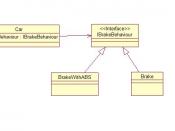1. Introduction
Strategy according to Henry Mintzberg
Henry Mintzberg, in his 1994 book, The Rise and Fall of Strategic Planning, points out that people use strategy in several different ways, the most common being these five:
1.Strategy is a plan, a "how", a means of getting from here to there.
2.Strategy is a pattern in actions over time; for example, a company that regularly markets very expensive products is using a "high end" strategy.
3.Strategy is a position; that is, it reflects decisions to offer particular products or services in particular markets.
4.Strategy is a perspective, an organisation's fundamental way of doing things (grand vision).
5.Strategy is a ploy, a specific manoeuvre intended to outwit an opponent or competitor.
Mintzberg also points out that for each advantage a strategy provides us, a disadvantage exists, thus:
Strategy sets direction but may create "blinders" on our thinking
It focuses effort but may create "group-think"
It provides consistency but may distort the reality of a situation through oversimplification
Even after these caveats Mintzberg is quick to say that strategy is definitely important, or rather the use of it is.
Strategy resolves the big issues so that people can get on with the little details.
Mintzberg argues that strategy emerges over time as intentions collide with and accommodate a changing reality. Thus, one might start with a perspective and conclude that it calls for a certain position, which is to be achieved by way of a carefully crafted plan, with the eventual outcome and strategy reflected in a pattern evident in decision and actions over time. This pattern in decisions and actions defines what Mintzberg called "realized" or emergent strategy.
2. Strategy formation according to Henry Mintzberg
2.1 Introduction
There are a number of ways to consider strategy...


